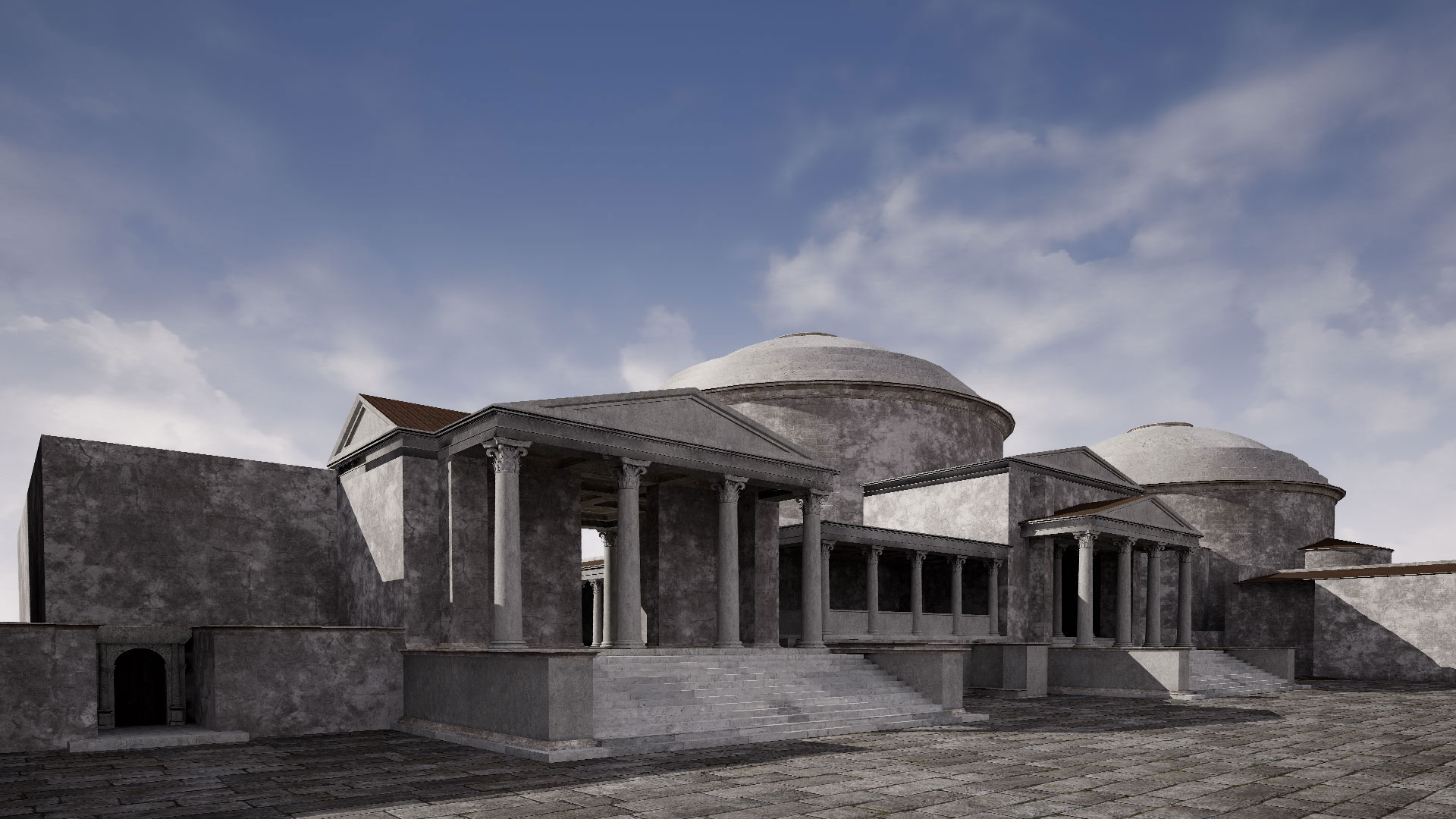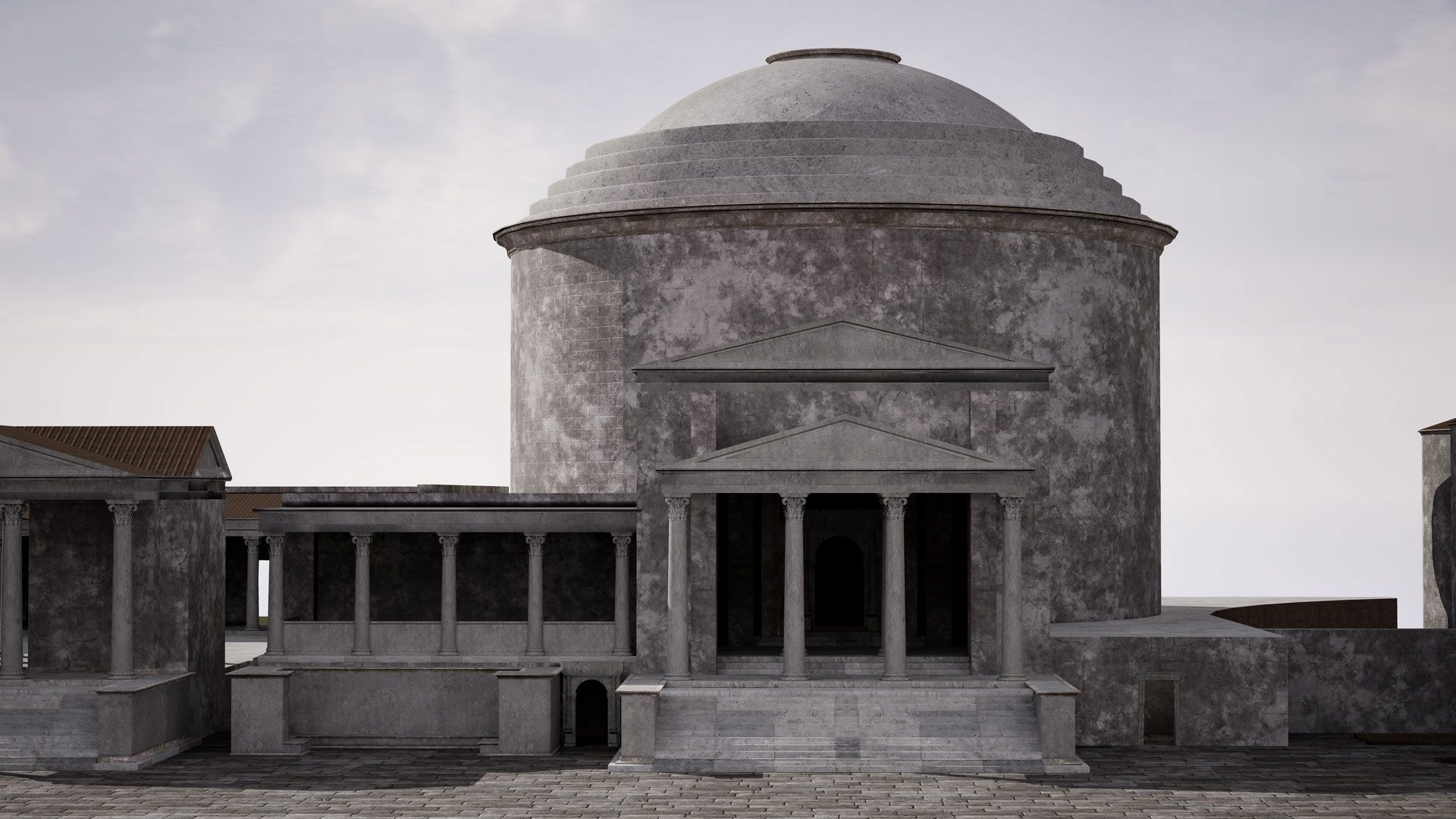Asklepion
Bergama 3D Interactive Models
Bergama 3D Interactive Models
In Bergama, the existence of the Asklepion, one of the world’s three most famous health centers of its time, has been known since the 4th century BC. Patients from all over the world, mostly those with paralysis, chest diseases, stomach pain, fractures, blindness, deafness, especially psychological disorders, come to Asklepion, where they receive free care. Patients are treated with cleanliness, purification, ointments, herbal medicines, mixtures added to milk, and minor surgeries. Additionally, alternative methods such as exercise, sports, theater, music, bathing, mud baths, sunbathing, reading books, walking in the cold, and sweating in the heat are used. Mental patients are monitored in sleep rooms, where they are asked to recount their dreams, and the cause of depression is understood. Present-day psychotherapy, or treatment through suggestion, is applied, restoring the patient’s confidence, attachment to life, and courage.
The entrance to the hospital is made through the ruined gate called “Viran Kapı,” which bears the inscription “Death cannot enter here.” Patients are admitted through Viran Kapı and examined by physicians called Asklepiads; those with terminal illnesses are not allowed inside. Patients diagnosed and to be treated are led to the entrance of the Asklepion through the sacred road, which is 820 meters long and has around 500 columns. The Asklepion, measuring 120×90 meters, is reached by passing through this road. Descending to the “small area” where the snake column is located is done via a small staircase. The small area is connected to an monumental entrance (propylon) built on four marble columns. To the right of the propylon, there is a section named after the goddess Artemis, the protector of diseases and childbirths, and to her right is a library covering an area of approximately 17×19 meters, paved with colored marbles. One of the two doors of the library opens onto the 128-meter-long Ionian-style north corridor, leading to the theater. At the western end of the north corridor is the hospital theater, which can accommodate 3,500 people and is three stories high, forming a semi-circular pit.


The Asclepius temple, dating back to the Hellenistic period, is in the Ionic order. Treatment rooms have been set up around the temple. Stone fountains and pools have been built for holy water. A tripod cauldron is dedicated to the temple. Each of the cauldron’s three legs is adorned with a golden figure: Asclepius, Hygieia (health), and Telesphorus (recovery). An offering is placed under the right hand of the statue of Asclepius.
The sacred area is surrounded by stoas on the north, west, and south sides. The best-preserved stoa is the Ionian-style north stoa. Only the columns on the library side of the stoa were destroyed in an earthquake and replaced with columns with composite capitals. The west stoa is 120 meters long and built in the Doric order. The south stoa is not well preserved.
The theater, dating back to the Roman period, is located at the western end of the north stoa. The theater, which is semi-circular, is divided into five sections vertically by steps and horizontally by a diazoma, accommodating 3,500 spectators. According to researchers, the stage is three stories high. An inscription in the area indicates that the theater is dedicated to Asclepius and Athena Hygieia.
The structure has not been preserved to the present day. It is thought that Christians converted the Zeus-Asclepius sacred area into a church. According to researchers, an altar, an ambo, and a frieze found in the ruins of the round temple indicate that Christians performed their worship here. Additionally, it is claimed that the structure identified as the baptismal building in the area was used by Christians for baptism ceremonies.